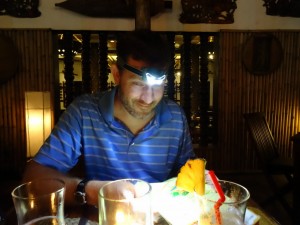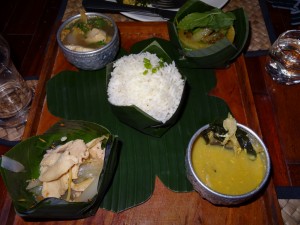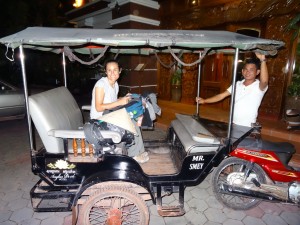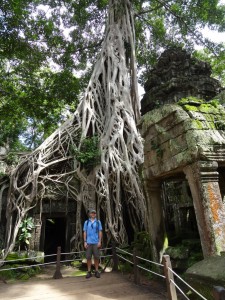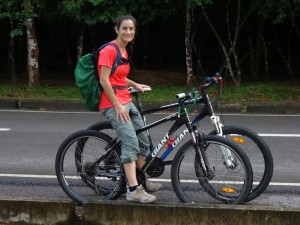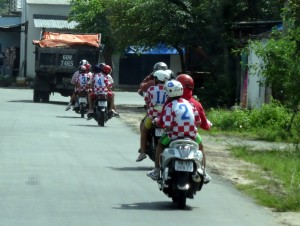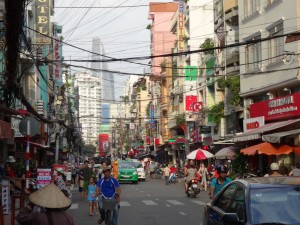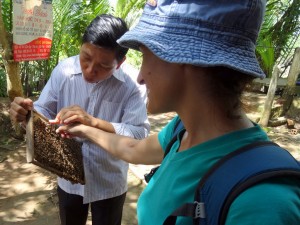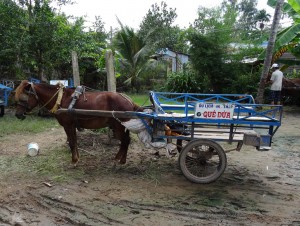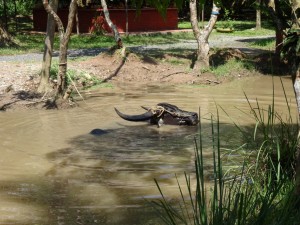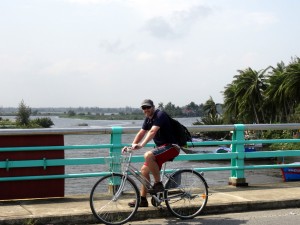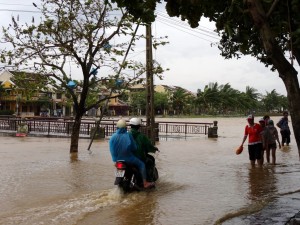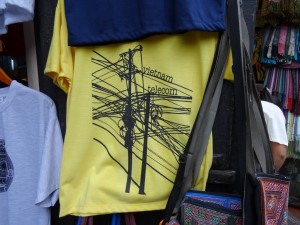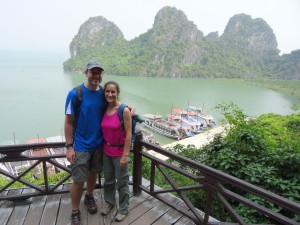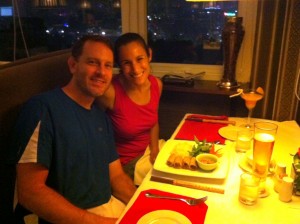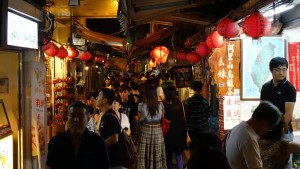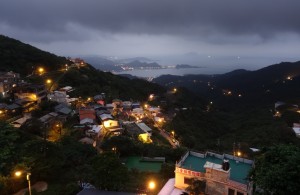My friend and co-worker Henk lives in Taipei with his fiance Mavis. They were wonderful hosts and personal tour guides, introducing us to the sights and food of Taipei. Our culinary adventure began the night we arrived in the city, at the famous Din Tai Fung, a Taipei original with locations worldwide. We ate delicious bean curd, fungus (kid you not, that’s what it was called), and cucumber appetizers, followed by pork and shrimp/veggie filled soup dumplings, ending with red bean buns for dessert. All delicious!

October 10th is Double Tenth Day, Taiwanese National Day, celebrating the Wuchang Uprising in 1911 which led to the establishment of the Republic of China (Taiwan), so Henk and Mavis were off from work. They had us up early for a traditional Taiwanese breakfast of sesame cake sandwiches stuffed with egg and fried dough (unsure of the official name) and soy milk, before heading out on the day long walking tour. We peppered them with questions about Taiwanese history and current relations with China, a very interesting topic that I knew little about. (China basically thinks Taiwan is still a part of China. Taiwan has all these songs and chants, which we heard playing in the squares a few times, saying that Taiwan and China are neighbors and speak the same language, but Taiwan is a separate country). Because of the holiday, many of the streets were shut down around the Presidential and government buildings. Here’s Henk enjoying the usually busy road all to himself. We also passed by some protests, both for and against the current president.
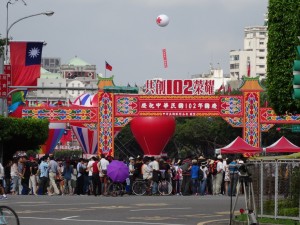

The city tour began with the Chiang Kai-shek Memorial Hall in Zhongzheng Park, which resembled the Lincoln Memorial. Chiang Kai-shek was an influential political and military leader in the 1900s, and his head appears on many coins and bills. This was followed by the Lungshan Temple (frequently spelled ‘Longshan’), a very active Buddhist temple, always filled with a lot of visitors and people praying. Henk helped us buy a small trinket for safe travels, which we waved in a circle three times over the burning incense.

Chiang Kai-shek Memorial Hall

Zhongzheng Park

Longshan Temple

Big crowds inside temple

Not the permanent home of our safe travels trinket
We stopped at Mos Burger for lunch, a Japanese fast food chain, known for using sticky rice as sandwich buns. It was then on to Bo Pi Liao Old Street, the Red House, and Huashan Creative Park. Taipei has a thriving cultural scene, with a lot of great performance venues and festivals. The month-long Huashan Living Arts Festival was starting, and we were able to walk around and enjoy some of the exhibits before catching a free drum performance in the afternoon.

We become part of the exhibit
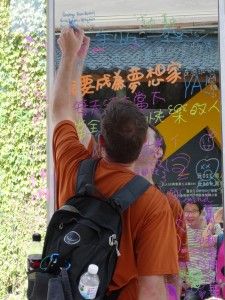
Ryan participates in another exhibit

Ryan’s note
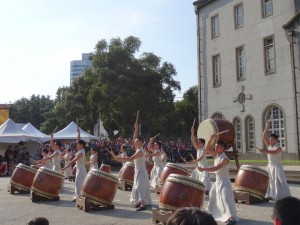
Drum performance
Next stop was Taipei 101, now the 4th tallest building in the world. Unique in architecture, it was designed with the structure of bamboo in mind and resembles a pagoda at the top. Taipei 101 also boasts one of the fastest elevators and claimed many other records when it was built. Henk and Mavis had already been to the top, and had a very long tea in the mall below while Ryan and I stood on line to go up, moseyed around and enjoyed the view, and stood on line to go back down. Following Taipei 101, we hiked up Elephant Mountain (more stairs than Henk and Mavis remembered) for a great view of the city.


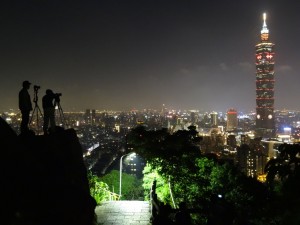
Taipei is famous for its night markets, so we hit Raohe Street Night Market for dinner, where the culinary adventure really began. First up, pig’s blood cake; sticky rice and pig’s blood formed into a rectangle, on a popsicle stick, coated in peanuts (we skipped this) and cilantro. It was relatively bland; Henk said it’s better with the peanuts. Ryan passed on trying it. On to the fried stinky tofu, served with pickled cabbage and soy sauce, which mostly tasted like tofu, though it is hard to get over the smell. Next was a sort of medicinal pork soup, called that because of the healthy spices they put in. It was very flavorful, with lots of cinnamon and maybe some nutmeg, and pork ribs.



Ryan and I were pretty full by that point, but couldn’t pass up the oyster omelette stand, a dish that both of us had been wanting to try. It was a bit different than we expected, not a traditional western omelette, as they also use usually a potato or flour starch in addition to eggs to make the batter sort of gooey. We both really liked the flavor, but were not a fan of the consistency. All these dishes were accompanied by about three cups of melon tea, a delicious sweet tea sold at every other stand. Exhausted from the tour and with full bellies, we said goodbye to Henk and Mavis at the metro station and headed back to our hotel for the night.

P.S. I write this from Hoi An, Vietnam, listening to the heavy rain and wind outside, with occasional brown-outs, caused by Typhoon Nari. The typhoon is expected to hit this area in about 5 hours, and some hotels closer to the coast have been evacuated. All the buildings here are built to withstand typhoons, and the storm is predicted to quickly lose steam once it hits land. There’s been a lot of crazy weather in the region the past month, but we’ve been very lucky to miss almost all of it up until this point.


